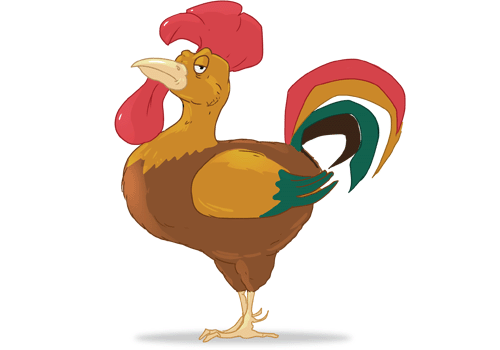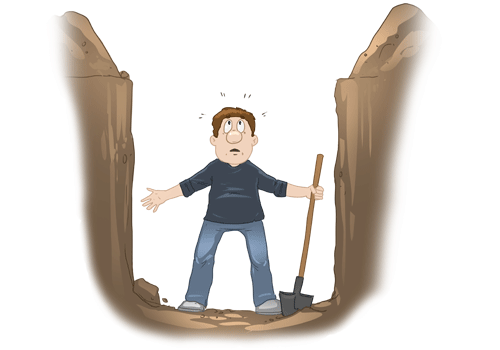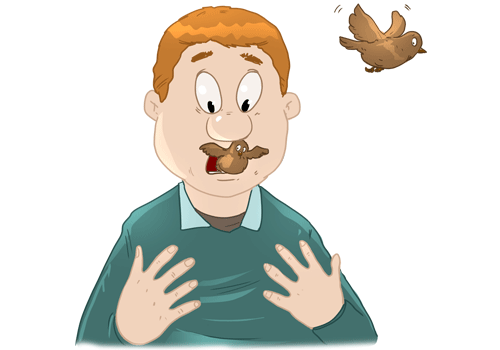Lithuanian
Lietuvių kalba
Lietuvių kalba
3.5 – 4 million
Lithuanian Republic, European Union
Poland, USA
Belarus, Kaliningrad region, USA, UK, Brazil, Argentina, Canada, Germany, Uruguay, Sweden, Norway, Australia, Latvia and other countries


It is possible to tell if a woman is married or not by the form of her family name, whereas this rule cannot be adapted for men. That is, unmarried women have family names with the endings "aitė", "iūtė" and "ytė" and married women's names always end with "ienė". A new ending "ė" has gained in popularity in recent years, which can be used either by married or by unmarried women. But it will take some time before it is widespread. At present it is used only by married women, mainly celebrities.
Interestingly, Lithuanian doesn’t have strong swear words. An example is rupūžė (toad). When Lithuanians feel the need to curse, they use either Russian or English swear-words.

Three women went to Vilnius, Lithuania for the first time. After returning home they shared their experiences with a friend:
– Lithuanian is so musical, just like a dance...
– Why?
– Because every time a bus stops passengers say “Lipsi, lipsi, čia-čia-čia”…
“Lipsi, lipsi, čia-čia-čia” These are not dance names, but a shortened form of “ar Jūs lipsite čia?” (Are you getting off here?)
Baltic languages formed a separate branch from other Indo-European languages.
Eastern Baltic languages split from the Western Baltic ones (or simply from Baltic language).
Difference between Lithuanian and Latvian languages started to appear.
Lithuanian and Latvian languages continued to develop separately.
The oldest remaining text in Lithuanian was a prayer written by hand in a copy of the book “Tractatus sacerdotalis” in 1503.
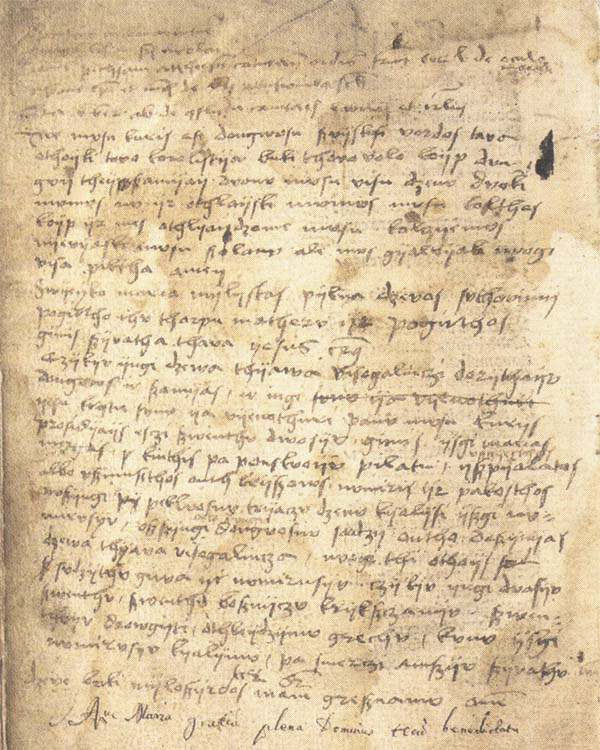
Source: Wikimedia Commons
Lithuanian is one of two surviving Baltic languages, along with Latvian. Today the Lithuanian language is the most archaic of all living Indo-European languages. It is believed that among the modern languages Lithuanian is the closest to the Proto-Indo-European language.
"Anyone wishing to hear how Indo-Europeans spoke should come and listen to a Lithuanian peasant," said the famous French linguist Antoine Meillet.
When specialists in Indo-European linguistics try to reconstruct the Proto-Indo-European language they find that contemporary Lithuanian is as important as ancient tongues such as Latin, Greek and Sanskrit.
Paul Thieme in 1958 compared the Lithuanian proverb: Dievas davė dantis; Dievas duos ir duonos and its Latin translation Deus dedit dentes; Deus dabit et panem (‘God gave teeth, God will also give bread’) with what he (Thieme) calls an old form of Sanskrit: Devas adadā t datas; Devas dā t (or dadā t) api dhā nā s.
Since both Sanskrit and Lithuanian are very archaic, there is a number of related and similar words, with identical or very close meanings. For example:
and many others.
In addition, similar language and its morphology: skr. asmi - asi - asti = lit. I am - you are - they are.
The language similarity is not due to their close relatives (Lithuanian language belongs to the Balto-Slavic languages and Sanskrit to Indo-Aryan), but due to the fact that both of these languages has retained much of Proto-Indo-European elements. Sanskrit as a liturgical language, hasn't changed since its creation, and the Lithuanian language on the historical and cultural contexts also changed relatively little.
Lithuanian has retained a very old vocabulary. This makes it a priceless treasure. The State Commission of the Lithuanian Language, among other things, guards the language so that it won’t get overloaded with too many foreign words. If possible, attempts are made to create new words instead of borrowed ones. Nevertheless, the growing influence of English is obvious.
Lithuanian has lots of diminutive-endearing suffixes, therefore there are plenty of expressive, endearing word forms:
Lithuanian has only two numbers (singular and plural) and two genders (masculine and feminine).
Lithuanian has four tenses (Past, Past iterative, Present, Future) and three conjugations.
The past iterative tense refers to a recurring action in the past: imdavau ir skaitydavau (I used to decide and read (not once)).
| Infinitive | |
|---|---|
| imti (to take), mylėti (to love), skaityti (to read) | |
| Past | |
| Singular | |
| 1st person | aš ėmiau, mylėjau, skaičiau |
| 2nd person | tu ėmei, mylėjai, skaitei |
| 3rd person | jis/ji ėmė, mylėjo, skaitė |
| Plural | |
| 1st person | mes ėmėme, mylėjome, skaitėme |
| 2nd person | jūs ėmėte, mylėjote, skaitėte |
| 3rd person | jie/jos ėmė, mylėjo, skaitė |
| Past iterative | |
| Singular | |
| 1st person | aš imdavau, mylėdavau, skaitydavau |
| 2nd person | tu imdavai, mylėdavai, skaitydavai |
| 3rd person | jis/ji imdavo, mylėdavo, skaitydavo |
| Plural | |
| 1st person | mes imdavome, mylėdavome, skaitydavome |
| 2nd person | jūs imdavote, mylėdavote, skaitydavote |
| 3rd person | jie/jos imdavo, mylėdavo, skaitydavo |
| Present | |
| Singular | |
| 1st person | aš imu, myliu, skaitau |
| 2nd person | tu imi, myli, skaitai |
| 3rd person | jis/ji ima, myli, skaito |
| Plural | |
| 1st person | mes imame, mylime, skaitome |
| 2nd person | jūs imate, mylite, skaitote |
| 3rd person | jie/jos ima, myli, skaito |
| Future | |
| Singular | |
| 1st person | aš imsiu, mylėsiu, skaitysiu |
| 2nd person | tu imsi, mylėsi, skaitysi |
| 3rd person | jis/ji ims, mylės, skaitys |
| Plural | |
| 1st person | mes imsime, mylėsime, skaitysime |
| 2nd person | jūs imsite, mylėsite, skaitysite |
| 3rd person | jie/jos ims, mylės, skaitys |
There are 7 cases (Nom, Gen, Dat, Acc, Instr, Loc, Voc), five declensions for nouns and three declensions for adjectives in Lithuanian.
An adjective in Lithuanian language can have up to 147 forms: 2 genders x 6 cases x 2 numbers x 2 forms x 3 degrees of comparison + 3 forms with no gender.
Pronominal forms of adjectives are a special feature of Lithuanian. The pronominal form of an adjective denotes that the feature is particular and at the same time it emphasizes this feature: gražus – gražusis (beautiful – this beautiful). Pronominal forms of adjectives are unknown for English, German, French and many other language speakers.
There are 32 letters in the modern Lithuanian alphabet:
The letters ą, į, ų once were used to denote nasal vowels. There are no nasal vowels in modern literary Lithuanian, but the letters remained to denote the long sounds /aː/, /iː/, /uː/.
Consonants in Lithuanian (except “j”) create hard and soft pairs. They also can be voiced or voiceless.
The phoneme /x/ is denoted by two letters – ch.
Lithuanian has (long and short) vowels and (hard and soft) consonants but also diphthongs (uo, ai, ei, ie) and diphthongal combinations (vowel and sonorous: al, am, an, ar, el, em, en, er, il, im, in, ir, ul, um, un, ur, ol, om, on, or).
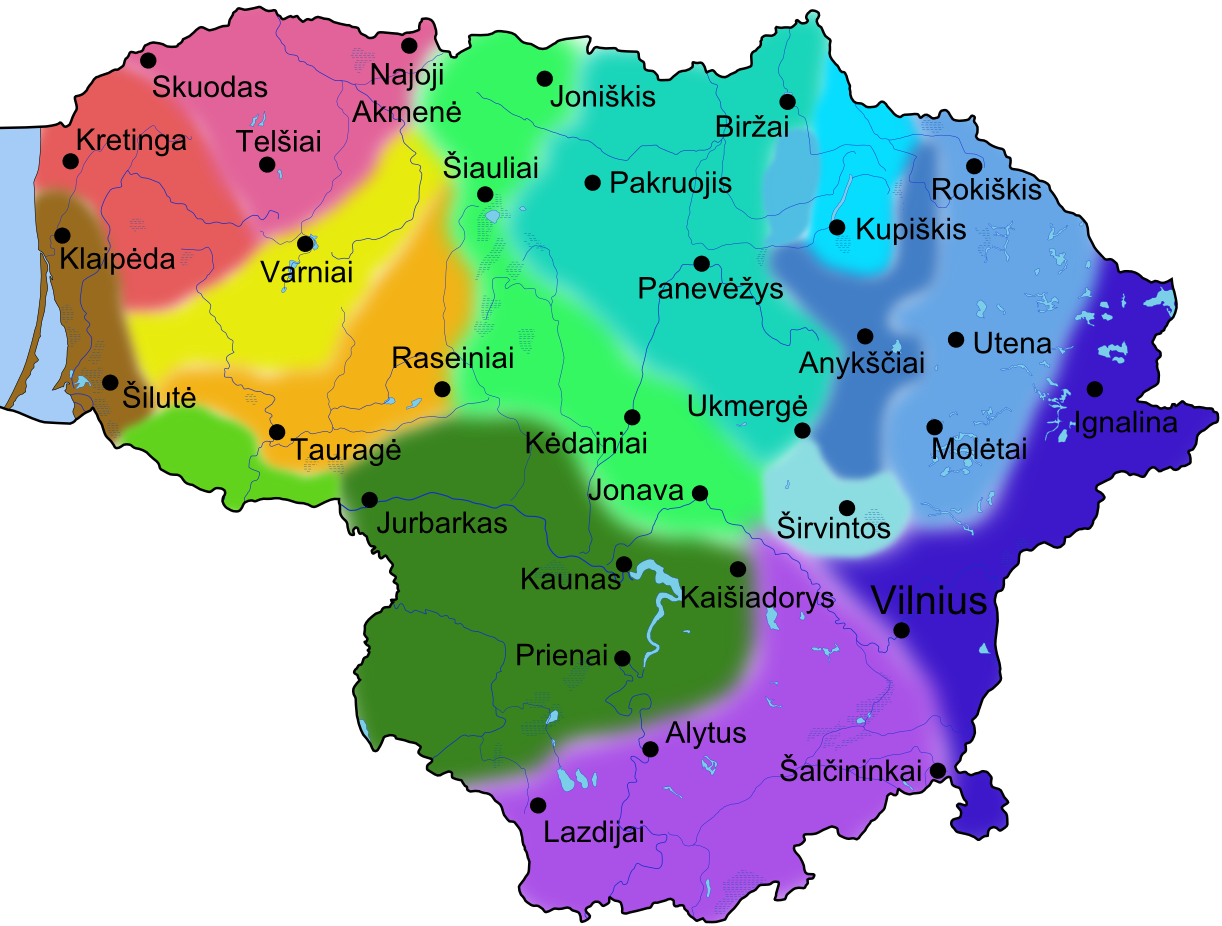
Source: Wikimedia Commons
Samogitian dialect
Aukštaitian dialect


